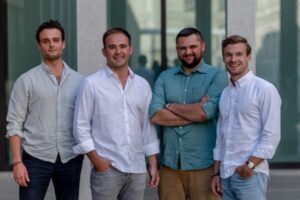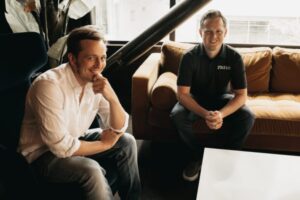
Fia Jones was 19 years old and studying physics at the University of Auckland in 2019 when she approached Rocket Lab founder and CEO Peter Beck at a party and told him she had an idea that would change the game for powering satellites. She’d be happy to tell him all about it … if he’d be willing to sign a nondisclosure agreement.
Cheeky, badass, naive – all words that come to mind when imagining this scenario, but it was Jones’ tenacity and confidence in the idea she and her co-founders – Max Daniels and William Hunter – came up with that enabled their startup, Astrix Astronautics, to take off.
The company, which develops power-efficient solar arrays for satellites, recently secured a spot on Rocket Lab’s Electron launch on May 2. Once in Earth’s orbit, Astrix’s cubesat, a teeny tiny satellite, unfurled into two inflatable solar arrays that measure around 10 square feet and can capture up to 200 watts of power.
In other words, Astrix has figured out how to use inflation to deploy a very large surface area from a compact volume, which allows for ease of access to power in isolated spaces.
This was the first time Astrix was really able to prove its concept, one that had industry experts skeptical due to the unpredictable nature of inflatable things in space. Astrix is gearing up to close a $5 million seed round, which will hopefully enable the company to scale further toward its mid-term goal of providing a low-cost power solution to newer satellite constellation companies that are trying to enter the market today.
“Power systems at the moment can cost more than what it costs to build the satellite itself,” Jones told TC. “Because we deploy such a large surface area, the biggest benefit for constellations is we’re able to switch to silicon cells rather than what everyone’s using, which is gallium arsenide cells, that are stupidly expensive. Like $2,000 to $3,000 per watt.”
“I didn’t happen to meet Peter Beck, and if I missed him at the ceremony, I would have continued to stalk him until I met him. I very intentionally went out to get his attention.” Fia Jones
We sat down with Jones to talk about how young founders can break into a legacy industry, the difference between pitching New Zealand and U.S. VCs, and how to deal with the limiting questions investors ask women versus the promotive questions they ask men.
The following interview, which has been edited for brevity and clarity, is part of an ongoing series that focuses on founders in the transportation sector.
Tell me about the time you approached Peter Beck with your startup idea.
At the University of Auckland, he was being awarded for being an adjunct professor. I was on holiday for a long weekend at the time, but one of my friends sent me Beck’s location, so I raced all the way there. The ceremony was over when I arrived, it was just a reception, so I snuck in and found him and was like, “I loved your speech.” And he was like, “Oh, I didn’t make a speech.” So then I was like, “Oh, sorry. So I love what you do, and I have this really cool business doing a new and innovative power system, but you have to sign an NDA. I promise it’s amazing.”










